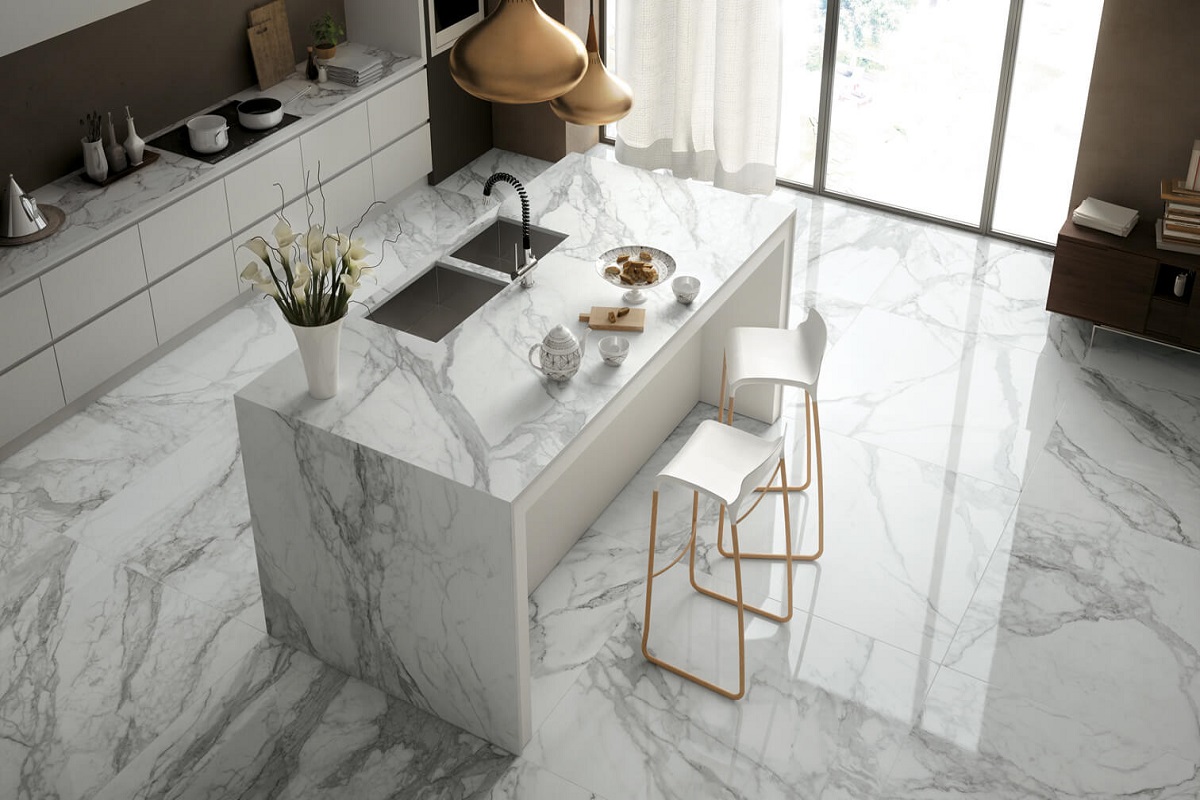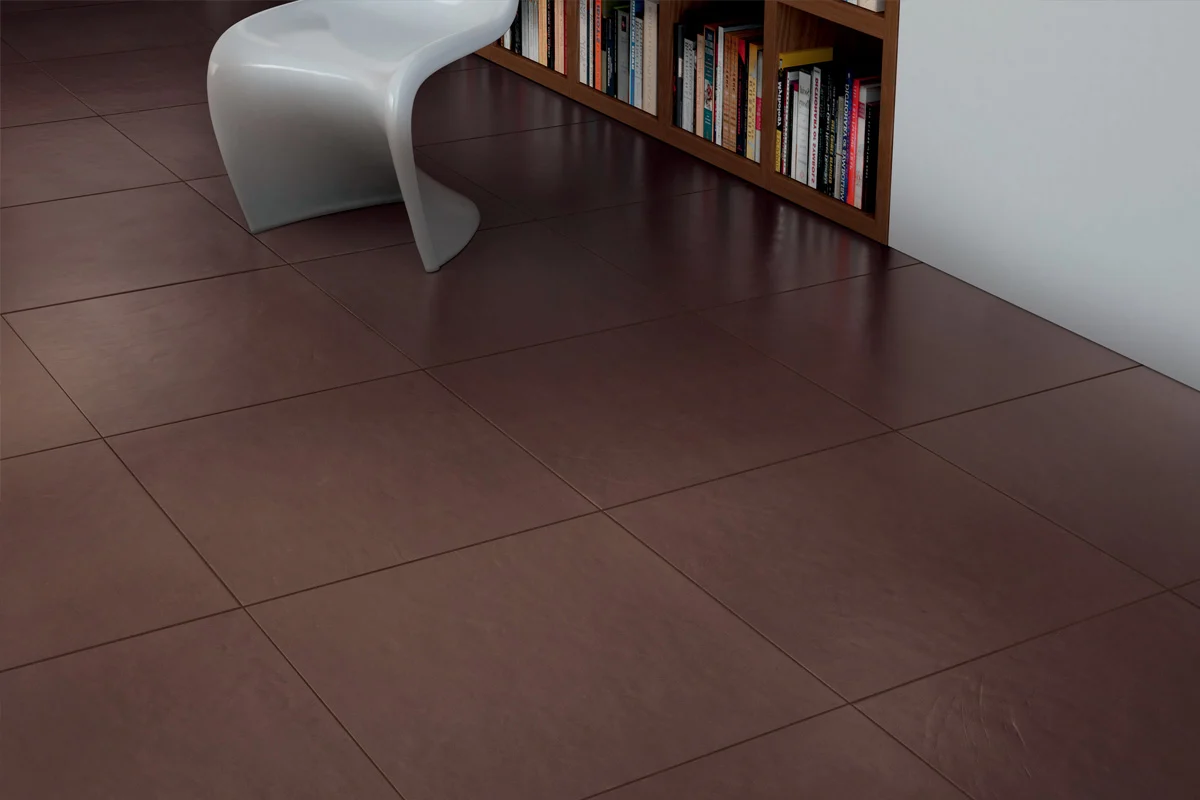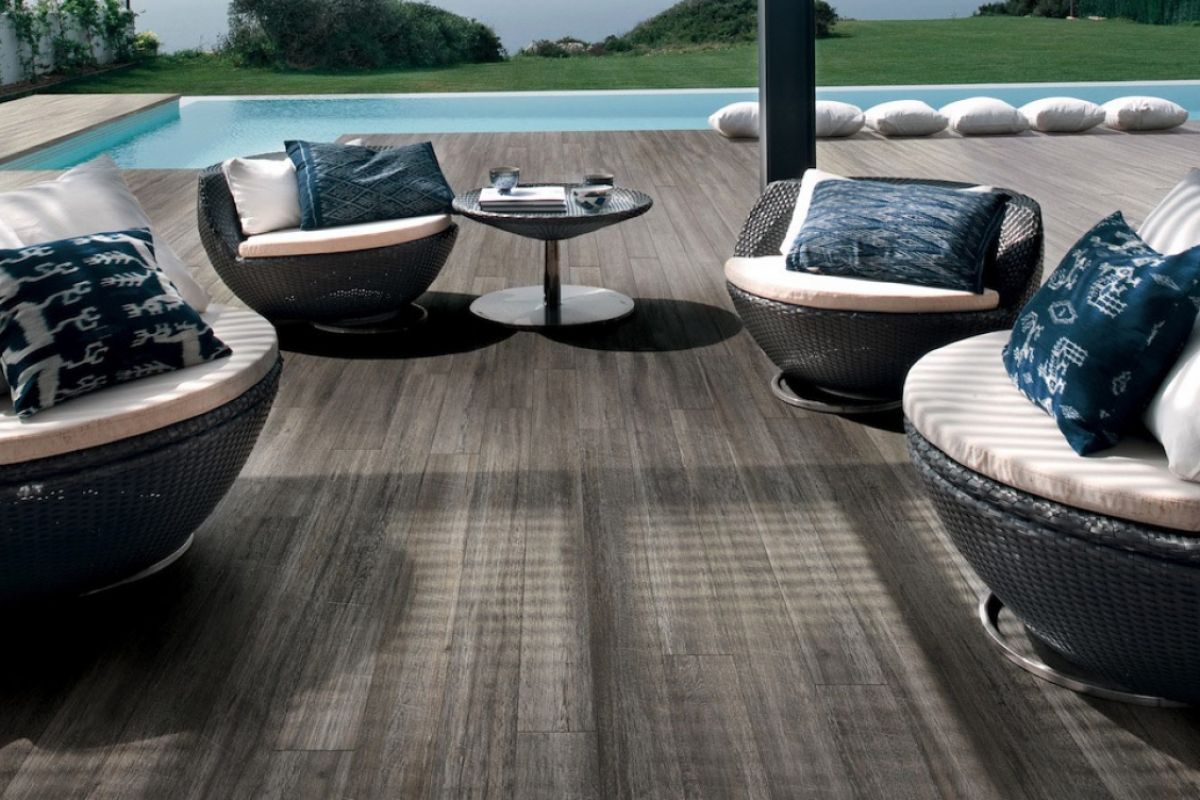Vitrified and porcelain are two major types of tiles which have sometimes suffered from misconceptions in comparing the two. Furthermore, some impacts of them on the environment, especially vitrified, have been a point of debate among researchers.
Depending on the environments the tiles will be used in, abrasion resistance is the ability of the glazed surface to resist wear from foot traffic or abrasion induced by mechanical equipment. It is divided into five categories:
PEI I – Tiles for rooms, en-suites, and guest bathrooms that see little foot traffic and are not exposed to abrasive soil
Tiles for places with moderate activity and medium to low abrasion, such as living/dining rooms and powder rooms, are classified as PEI II.
Tiles for high/medium to high traffic and average abrasion are classified as PEI III, and examples include entrances, corridors, domestic kitchens, and family rooms.
PEI IV – Tiles for high traffic locations, such as eateries, bars, cafes, workplaces, and stores.
PEI V – Tiles for heavily trafficked areas, such as factories, airports, schools, and shopping malls.

Vitrified and Porcelain Tiles Misconceptions
Misconceptions of porcelain and vitrified tiles are not so surprising since it is a completely technical course. During the course of my research for this essay, I came across a great deal of stuff that was both incorrect and poorly written. This just helps to further confuse readers who are looking for information that is reliable and applicable.
You could have seen or heard certain assertions about the purportedly “poor” features of vitrified porcelain tiles and the grounds for avoiding the usage of them. These allegations can be found in some articles or on some websites. Let’s go over these assertions one by one in order to make the situation more transparent.
When wet, vitrified tiles are slick. The majority of tiles, regardless of whether they are glazed or unglazed, have the potential to become slippery when wet. Tiles with a matte finish are significantly less likely to do so, and tiles with a textured or grip-finished surface are not likely to become slippery because they are designed specifically for use outdoors.
If the floor and your foot are both dry, there is no chance that you will fall. If the floor is damp and your foot is wet, you won’t fall even if the floor is also damp. We step onto a bath mat regardless of whether or not there is tile on the floor because slipping can occur when one surface is wet and another is dry, which is the scenario that occurs after exiting the shower cubicle.
The installation of vitrified tiles might be difficult.
Because no rationale is supplied, it is difficult to comprehend what is intended by this remark; yet, vitrified porcelain tiles are not more difficult to install than marble tiles or ceramic wall tiles.
Because of its great strength and level of hardness, porcelain tiles are often required to be cut using a bench saw that is cooled by water. It is now possible to manufacture large porcelain tiles in dimensions such as 450 mm by 900 mm, 900 mm by 900 mm, 600 mm by 1200 mm, and so on.

The prevalence of the usage of large format tiles is indicative of the existence of a market for such tiles; nonetheless, these sizes will require cutting on a bench saw in order to be used. Because of its weight and size, installing a tile measuring 900 by 900 millimeters will require the assistance of two people, but the same could be said about installing marble tiles of 600 by 600 millimeters.
In order to keep everything stable, you need to utilize adhesives of a high quality.It is unclear to me how the use of adhesives described as “high quality” can be deemed a disadvantage.
You want the wall and floor tiles to stay in place for as long as possible, don’t you think?
If you divide the cost of the installation into the cost of maintaining the tiled area during its lifetime, you’ll find that the longer you keep the tiles in place, the lower the overall cost will be. This claim also gives the impression that low-quality adhesives may be used to install all other sorts of tiling materials.A knowledgeable tile layer is required to lay vitrified tiles in order to achieve the desired results of thin, uniform, and neat seams.
Again, I don’t get how the necessity of employing an experienced tiler can be considered a disadvantage of vitrified tiles by itself. If the word “vitrified” were substituted with “ceramic,” one might legally say the same thing; for example, “Ceramic tiles need to be set by a skilled tile layer to ensure thin, even, and neat seams.” In point of fact, wall tiles, which are frequently fabricated from bicottura ceramic, have a higher demand for clean seams in comparison to other types of tiles.
Along the grout line, it is required to cut away defective or damaged vitrified tiles in order to prevent further damage to the tiles that are near to the line.
It is necessary to find solutions to a couple of these problems. This predicament is applicable to any and all kinds of tiling, including those made of monocottura ceramic, glazed or unglazed porcelain, marble, or granite, among other materials.
If the grout is removed first, there is a greatly reduced risk of shattering any of the neighboring tiles; however, the risk of damaging a tile increases in proportion to the tile’s level of softness.
Due to the fact that fully vitrified unglazed porcelain tiles are exceptionally scratch- and chip-resistant, the likelihood that they will need to be replaced anytime soon is extremely low.
In addition, chips and scratches are not noticeable on them since the color goes all the way through them and penetrates them completely. Despite the fact that chips are inevitable in glazed porcelain, particularly in cases where the color of the glaze contrasts with the vitrified porcelain body, the glaze on high-quality porcelain tiles is quite hardy.

After all, these tiles were designed to be stepped on, given that they are manufactured and put together with the idea that people will be walking on them. If they are so tough to cut that a saw with a diamond blade is required, then they will be able to resist normal wear and tear.
Porcelain tiles of high quality often have a glaze with a MOHS hardness of 8, which is more durable than certain igneous rocks such as granite and quartz and more difficult to scratch than the majority of marbles (MOHS 3-4). The man-made substance known to be the hardest is diamond, which has a Mohs scale hardness of 10.
Every year or two, the grout needs to have its seal reapplied; otherwise, it will begin to have an unsanitary appearance. If the sealant is allowed to dry for an extended period of time, the tiles will take on a hazy sheen.
This cannot possible be a problem with the tiles; instead, it must be with the grout or the sealant. However, it is not what it seems to be. In the process of cleaning the floor, the grout is also cleaned. There is a possibility that mold-preventing chemicals will be introduced to the grouting process. When a high-quality sealer is used, the process only needs to be done once, or at the most, once every 15 years or so.
If the sealer is applied with a thin brush, it won’t cover the tiles fully, and if any excess is wiped off before it dries, it won’t leave a “hazy finish.” However, if the sealer is applied with a thick brush, it will cover the tiles completely. You will end up with a “hazy finish” regardless of the type of tile you use if you don’t perform any of the things that have been suggested so far.
It is extremely unlikely that you will find an identical tile after a few years has passed, so when you are acquiring tiles to utilize in prospective repairs, you should acquire a few additional tiles as a precautionary measure.
This is actually good advice, however it applies to all purchases of tiles in general, not only vitrified tiles. Using vitrified porcelain tiles is most definitely not contraindicated by this.
The general rule of thumb when buying tiles of any kind is to allow a 10% waste factor, with the emphasis being on “wastage factor.” Even though you might not have any spare tiles when the job is done, having some is the least expensive form of insurance.
Numerous factors can necessitate additional tiles, but plumbing problems or changing the kitchen’s layout are frequently the culprits, so adding just one more tile will not suffice. Remember that the waste factor should increase with tile size; your tiler just needs to break one tile for you to lose anywhere between half and a full metre.
If you use Winckelmans 100x100mm vitrified porcelain tiles, they are not only incredibly sturdy but also have a color that throughout the entire tile and come in 100 pieces per square metre rather than just one or two. Additionally, Winckelmans has been producing the same hues and forms for more than a century.

Vitrified Tiles Impacts on Environment
The impacts of vitrified tiles manufacturing on environment is not positive, but in that case, we should avoid vehicles, cows, and airplanes as a result of this argument. If it were accurate, which it isn’t, reputable tile manufacturers in Europe have made it regular practice to enact stringent environmental regulations related to their production.
Manufacturers of ceramic and porcelain in Europe are dedicated to using waste-free production methods and only employ abundant, natural materials. The environmental regulations that apply to porcelain tile manufacturers in Italy, Spain, and France are among the strictest in the world.
The usage of raw materials, anti-pollution production tools, post-industrial recycling, air quality, and the use of recycled materials for product packaging are all governed by legislative standards. As a result, industrial processes have a smaller negative impact on the environment, and the resulting goods have outstanding ecological properties.
Through ISO 14001, EMAS, and the European Union Ecolabel, European environmental standards for the porcelain industry are recognized and validated.
Porcelain tiles provide energy efficiency at the other end of the supply chain because of its built-in thermal mass, which lowers peak heating and cooling to a comfortable temperature in the home or office. Ceramic and porcelain tile also has the lowest carbon impact of any type of flooring due to the source of its materials.
The price of vitrified tiles is higher.
Rarely, if ever, is this statement qualified. What is “more pricey” than?

Although European porcelain tiles, both glazed and unglazed, may cost more than porcelain items made in non-European nations, are you really comparing like with like?
Given the environmental factors mentioned in #8 above, it is easy to understand why European ceramic products cost more than tiles from nations where environmental concerns are nonexistent. However, among “all” forms of floor covering, porcelain and ceramic tile rank top for predicted life and lowest for cost per square meter per year in the European Union’s Life-Cycle Assessment (LCA).
The question of price comparison now takes on a completely new dimension as one compares not only the initial cost of, say, real Carrara marble tiles with the glazed porcelain lookalike, but also the shipping and installation costs, the cost of the special adhesives needed for stone compared to that for porcelain, the look and feel of concrete, metal, and myriad different timbers.
Therefore, it is crucial to address the opening claim by asking, “Compared to what?” Are you comparing apples to apples?
A long-term reliable business relationship is at hand if you contact us. A professional supplier and exporting team support us to have a win-win relationship with our customers.











Your comment submitted.